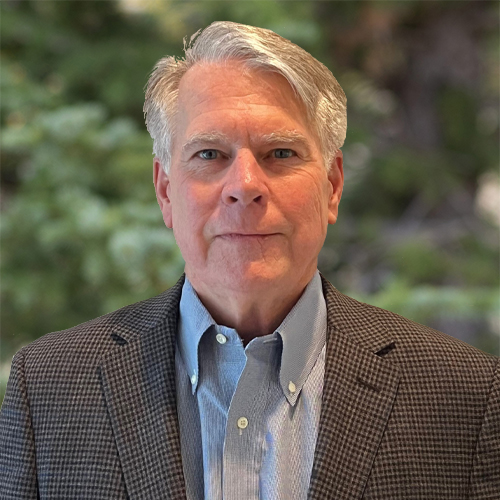
Dr. Michael Macrander is an environmental scientist with more than 35 years of experience as an ecologist investigating environmental interactions and the restoration of natural systems affected by human and industrial activities. He has worked extensively with the identification of and issues relating to sensitive ecological resources, including Arctic offshore environments, threatened and endangered species, marine mammals, wetlands, riparian zones, and coastal ecosystems. He has designed and implemented wildlife and ecological investigations and restorations in a diversity of settings and situations and specializes in developing science-based strategies that help to resolve complex environmental issues, achieve permitting requirements, and address stakeholder concerns.
Dr. Macrander recently joined Integral’s Ecology Group after working 25+ years as an environmental ecologist for the Royal Dutch Shell Group (1991–2017) during which he worked on a variety of projects in all aspects of the petrochemical and energy industry. In addition to his most recent role as global lead and spokesperson for Arctic science, he worked on many of the company’s most complex and high profile environmental issues of the last three decades. He has worked extensively in the areas of ecological risk assessment, natural resource damage assessment, ecological restoration, spill response, and site and impact assessment. He has also been an industry leader in the development and use of emerging assessment technologies in marine acoustics, the use of drones in aerial reconnaissance, and the use of computer-assisted pattern recognition to provide high quality data cost-effectively and with lower human exposure potential.
Having served on multiple National Academy of Sciences and other national advisory panels, he is a recognized leader in the field of environmental ecology and brings broad experience in working under the provisions of NEPA, CERCLA, the Clean Water Act, Oil Pollution Act, Endangered Species Act, and Marine Mammal Protection Act. He has worked successfully to resolve environmental issues with state and federal regulators in all regions of the United States and the international community.
Ph.D., Biology (Ecology/Physiology), University of Alabama, Tuscaloosa, Alabama, 1983
B.A., Biology, Tarkio College, Tarkio, Missouri, 1975
Hazardous Waste Operations and Emergency Response 24-Hour Certification (1991; refreshers current through 2007)
First Aid and CPR certified (2015)
Member of the National Academy of Board for the Gulf Research Program (current)—Defining the research needs for long-term sustainable development and restoration of the Gulf of Mexico.
National Petroleum Council Evaluation of Research Needs for Prudent Development of Energy Resources in the Arctic (2014–2015)—Ecological and Human System subject matter lead, editor, and contributing author.
National Academy of Sciences Committee Member (2012–2013)—Advising on emerging research needs in the Arctic.
National Academy of Sciences Committee on Characterization of Wetlands (1992–1994)—Advising Congress, EPA, and Department of Interior on methods for the identification and delineation of wetlands.
A. Michael Macrander, Ph.D. Associate of Integral
Dr. Michael Macrander is an environmental scientist with more than 35 years of experience as an ecologist investigating environmental interactions and the restoration of natural systems affected by human and industrial activities. He has worked extensively with the identification of and issues relating to sensitive ecological resources, including Arctic offshore environments, threatened and endangered species, marine mammals, wetlands, riparian zones, and coastal ecosystems. He has designed and implemented wildlife and ecological investigations and restorations in a diversity of settings and situations and specializes in developing science-based strategies that help to resolve complex...
Dr. Michael Macrander is an environmental scientist with more than 35 years of experience as an ecologist investigating environmental interactions and the restoration of natural systems affected by human and industrial activities. He has worked extensively with the identification of and issues relating to sensitive ecological resources, including Arctic offshore environments, threatened and endangered species, marine mammals, wetlands, riparian zones, and coastal ecosystems. He has designed and implemented wildlife and ecological investigations and restorations in a diversity of settings and situations and specializes in developing science-based strategies that help to resolve complex environmental issues, achieve permitting requirements, and address stakeholder concerns.
Dr. Macrander recently joined Integral’s Ecology Group after working 25+ years as an environmental ecologist for the Royal Dutch Shell Group (1991–2017) during which he worked on a variety of projects in all aspects of the petrochemical and energy industry. In addition to his most recent role as global lead and spokesperson for Arctic science, he worked on many of the company’s most complex and high profile environmental issues of the last three decades. He has worked extensively in the areas of ecological risk assessment, natural resource damage assessment, ecological restoration, spill response, and site and impact assessment. He has also been an industry leader in the development and use of emerging assessment technologies in marine acoustics, the use of drones in aerial reconnaissance, and the use of computer-assisted pattern recognition to provide high quality data cost-effectively and with lower human exposure potential.
Having served on multiple National Academy of Sciences and other national advisory panels, he is a recognized leader in the field of environmental ecology and brings broad experience in working under the provisions of NEPA, CERCLA, the Clean Water Act, Oil Pollution Act, Endangered Species Act, and Marine Mammal Protection Act. He has worked successfully to resolve environmental issues with state and federal regulators in all regions of the United States and the international community.
- Natural Resource Damage Assessment
- Environmental Monitoring
- Coastal Resilience
- Risk Assessment
- Water Quality Monitoring

